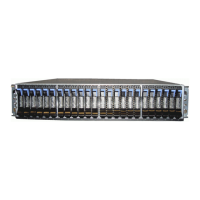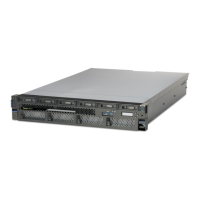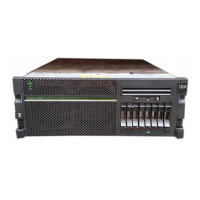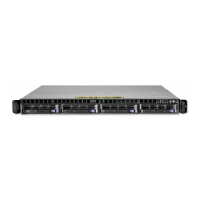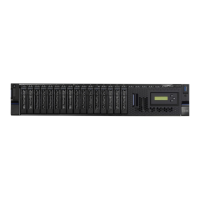Chapter 3. Virtualization 77
Draft Document for Review September 2, 2008 5:05 pm 4405ch03 Virtualization.fm
Virtual Ethernet
Virtual (TTY) console
Virtual SCSI
The POWER Hypervisor provides a virtual SCSI mechanism for virtualization of storage
devices (a special logical partition to install the Virtual I/O Server is required to use this
feature, as described in 3.3.2, “Virtual I/O Server” on page 81). The storage virtualization is
accomplished using two, paired, adapters: a virtual SCSI server adapter and a virtual SCSI
client adapter. Only the Virtual I/O Server partition can define virtual SCSI server adapters,
other partitions are
client partitions. The Virtual I/O Server is available with the optional
PowerVM Edition features.
Virtual Ethernet
The POWER Hypervisor provides a virtual Ethernet switch function that allows partitions on
the same server to use a fast and secure communication without any need for physical
interconnection. The virtual Ethernet allows a transmission speed in the range of 1 to 3 Gbps.
depending on the MTU
1
size and CPU entitlement. Virtual Ethernet support starts with AIX 5L
Version 5.3, or appropriate level of Linux supporting Virtual Ethernet devices (see chapter
3.3.7, “Operating System support for PowerVM” on page 90). The virtual Ethernet is part of
the base system configuration.
Virtual Ethernet has the following major features:
The virtual Ethernet adapters can be used for both IPv4 and IPv6 communication and can
transmit packets with a size up to 65408 bytes. Therefore, the maximum MTU for the
corresponding interface can be up to 65394 (65390 if VLAN tagging is used).
The POWER Hypervisor presents itself to partitions as a virtual 802.1Q compliant switch.
The maximum number of VLANs is 4096. Virtual Ethernet adapters can be configured as
either untagged or tagged (following the IEEE 802.1Q VLAN standard).
A partition supports 256 virtual Ethernet adapters. Besides a default port VLAN ID, the
number of additional VLAN ID values that can be assigned per Virtual Ethernet adapter is
20, which implies that each Virtual Ethernet adapter can be used to access 21 virtual
networks.
Each partition operating system detects the virtual local area network (VLAN) switch as an
Ethernet adapter without the physical link properties and asynchronous data transmit
operations.
Any virtual Ethernet can also have connectivity outside of the server if a layer-2 bridge to a
physical Ethernet adapter is set in one Virtual I/O server partition (see 3.3.2, “Virtual I/O
Server” on page 81 for more details about shared Ethernet). Also known as Shared Ethernet
Adapter.
Virtual (TTY) console
Each partition needs to have access to a system console. Tasks such as operating system
installation, network setup, and some problem analysis activities require a dedicated system
console. The POWER Hypervisor provides the virtual console using a virtual TTY or serial
1
Maximum transmission unit
Note: Virtual Ethernet is based on the IEEE 802.1Q VLAN standard. No physical I/O
adapter is required when creating a VLAN connection between partitions, and no access to
an outside network is required.
